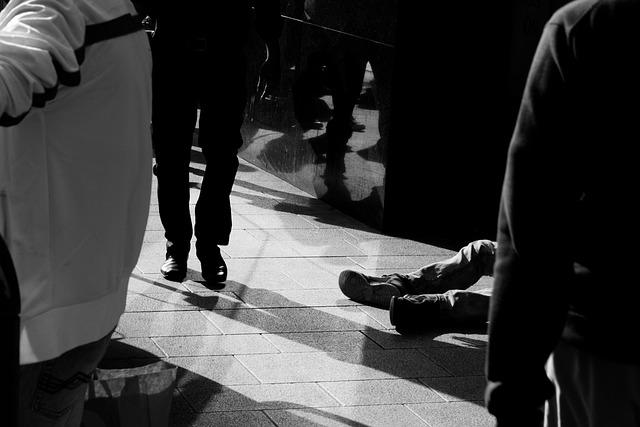Confronting Inequality: Unpacking Pakistan’s Social Divides
In the heart of Pakistan, a complex tapestry of cultures, languages, and traditions weaves together the identity of a nation rich in history and promise. Yet, beneath the vibrant surface lies a profound challenge—deep-seated social divides that continue to shape the lives of millions. From the bustling streets of Karachi to the serene valleys of Kashmir, the echoes of inequality resonate, highlighting a stark contrast between privilege and deprivation. This article embarks on an exploration of the multifaceted nature of social inequality in Pakistan, peeling back the layers to understand its origins, manifestations, and impacts on society. By examining the intersections of class, gender, ethnicity, and geography, we aim to shed light on the dynamics of division while fostering a dialogue that may lead to greater awareness and, ultimately, change. As we confront these pressing issues, we invite readers to join us in unpacking the complexities of Pakistan’s social fabric, understanding that the path to a more equitable future begins with confronting the reality of inequality.
Exploring the Historical Roots of Social Inequality in Pakistan
The fabric of Pakistani society is intricately woven with threads of historical events, cultural shifts, and economic transformations that have shaped its social landscape. The historic stratification can be traced back to several factors, including colonization, feudalism, and the partition of India. Colonial rule entrenched social hierarchies as the British implemented policies favoring certain groups, which created disparities in education and economic opportunities. Feudal systems further exacerbated these divides, concentrating land ownership and resources among a small elite, while leaving the majority marginalized and dependent on these power structures. The partition of 1947 led to massive displacement and communal violence, creating new social dynamics that influenced ethnic and religious identities, further complicating the existing inequalities.
In contemporary Pakistan, these historical divides are manifested in various forms of social inequality, characterized by urban-rural divides, caste-based discrimination, and gender disparities. For instance, the growing urbanization has resulted in economic opportunities concentrated in cities, leaving rural populations vulnerable and underprivileged. Moreover, caste systems still linger in certain areas, perpetuating discrimination and hindering social mobility for lower castes. Gender disparities are prevalent as well, with women facing multiple layers of discrimination in education and employment due to cultural norms. To comprehend the interplay of these historical roots and their modern consequences, it is crucial to recognize how they interconnect to fuel the persistent social divides. Key factors influencing inequality include:
- Colonial Legacies: Policies that favored select communities
- Feudal Hierarchies: Concentration of land and resources
- Partition Aftermath: Displacement and communal tensions
- Urban-Rural Divide: Inequitable access to opportunities
- Gender Disparity: Education and employment inequities

The Impact of Education Disparities on Social Mobility
Education serves as both a beacon and a barrier in the complex landscape of social mobility. In Pakistan, the gap between educational opportunities is not merely an inconvenience; it is a defining factor that perpetuates cycles of poverty and wealth. Access to quality education varies dramatically between urban and rural areas, often dictated by socioeconomic status. Those in affluent neighborhoods can attend well-resourced schools equipped with technology and trained teachers, while students in less privileged regions may struggle with outdated facilities and insufficient staff. The consequences are profound: while a small fraction is propelled toward higher education and lucrative careers, the majority remain trapped in low-wage jobs, disempowered and disenfranchised.
Moreover, systemic issues compound these educational disparities, creating a feedback loop of inequality. Cultural norms, such as the undervaluation of girls’ education, further inhibit upward mobility for significant segments of the population. Students from marginalized backgrounds may experience:
- Inadequate Funding: Schools in poorer regions often face budget cuts.
- Limited Access to Learning Resources: Essential materials and extracurricular opportunities are scarce.
- Social Stigma: Students from lower-income families may encounter biases that affect their self-esteem and future aspirations.
This multifaceted impact of educational inequality necessitates a comprehensive intervention that addresses not just access, but the quality and relevance of education, ensuring that every child in Pakistan has a fair chance at realizing their potential.

Bridging the Gender Gap: Empowering Women for Economic Parity
In Pakistan, the journey towards economic parity for women is fraught with challenges, yet it remains vital for the nation’s overall development. Empowering women through education, skill development, and access to resources lays the groundwork for a more equitable society. By investing in women’s potential, we unlock pathways that contribute to not only individual progress but also enhance broader economic growth. Initiatives such as microfinance programs and technical training workshops serve as essential tools, allowing women to break free from traditional constraints and engage fully in the workforce.
To forge a path toward true equality, it is crucial to dismantle the systemic barriers that hinder women’s participation in the economy. This involves fostering a culture that values gender diversity in all sectors, encouraging both public and private entities to adopt inclusive policies. Additionally, harnessing technology can amplify women’s voices and create new opportunities for entrepreneurship. Communities can benefit significantly from initiatives that promote work-life balance, such as flexible work arrangements. The table below summarizes key steps to bridge the economic disparity:
| Action | Purpose |
|---|---|
| Education and Training | Enhance skills for better job opportunities |
| Legislative Support | Ensure policies protect women’s rights |
| Access to Credit | Facilitate entrepreneurship among women |
| Awareness Campaigns | Promote the economic value of gender equality |

Policy Innovations for Inclusive Growth and Social Justice
In the quest to bridge the vast social divides that plague Pakistan, policy innovations focused on inclusive growth and social justice are imperative. Mobilizing public resources in a manner that prioritizes the underserved can help catalyze progress. Among the most promising strategies are:
- Universal Basic Services: Ensuring access to health, education, and clean water can foster long-term socio-economic benefits.
- Participatory Budgeting: Involving communities in fiscal decision-making empowers citizens and fosters accountability.
- Conditional Cash Transfers: Programs aimed at supporting low-income families can incentivize education and health compliance.
Additionally, addressing systemic inequalities through a multifaceted approach is crucial. Policymakers must consider integrating gender-sensitive provisions and promoting local entrepreneurship. Research indicates that when communities engage in decision-making and have their voices amplified, the resultant policy framework is more reflective of diverse needs. Innovative approaches like:
- Microfinance Initiatives: Tailoring financial services to meet the needs of women and marginalized groups.
- Technology-Driven Solutions: Leveraging digital platforms to widen access to markets and information.
- Social Safety Nets: Developing comprehensive support systems to shield vulnerable populations against economic shocks.
Future Outlook
As we conclude our exploration of the intricate tapestry of social divides in Pakistan, it becomes clear that confronting inequality is not merely a matter of policy, but a call to the collective consciousness of society. The narratives we’ve unpacked reflect the struggles, aspirations, and resilience of countless individuals striving for equity in a landscape marked by disparity.
To bridge the divides that separate the affluent from the marginalized, the educated from the uneducated, requires not just reform, but a reimagining of our societal values—embracing compassion and fostering a sense of shared destiny. The road ahead is undeniably complex, fraught with challenges that demand the participation of every citizen, every leader, and every institution.
As we move forward, let us view the fight against inequality not as an insurmountable task, but as an opportunity for growth and unity. In the quest for a more just society, we may find that our strengths lie not just in our individual efforts, but in our ability to stand together, to listen, and to learn from one another. The journey is long, but the promise of a more equitable future is worth every step.



